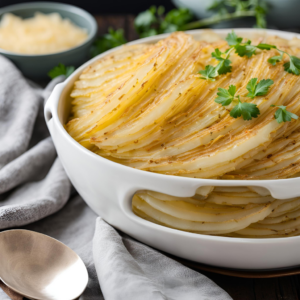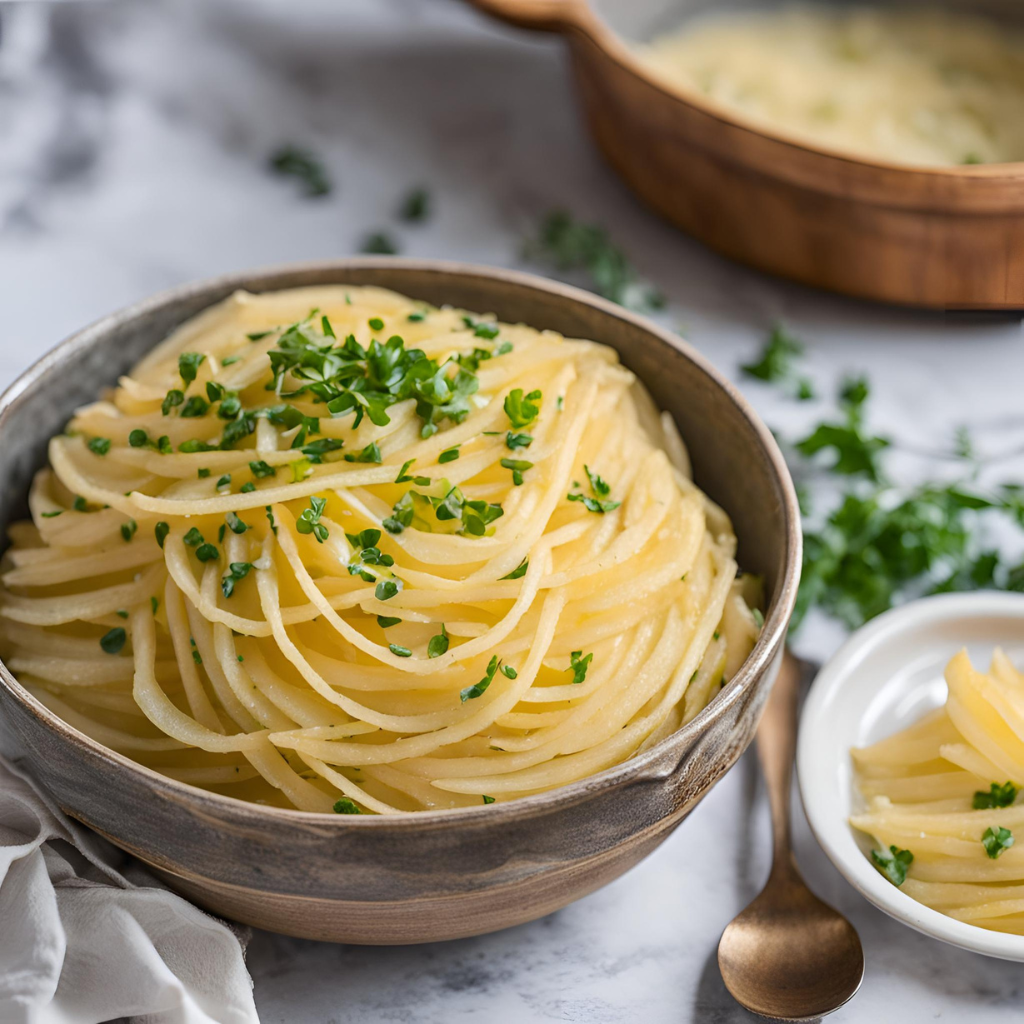Thousand Layer Potatoes is a delicious and impressive way to enjoy potatoes. This dish layers thin slices of potatoes with butter and herbs, creating a crispy, golden treat that’s both simple and elegant.
To prepare, slice the potatoes very thin and layer them in a baking dish with melted butter, salt, and your favorite herbs. Bake until the potatoes are tender and the edges are crispy. The result is a stunning, layered potato dish that’s perfect for any occasion.
Great for family dinners, special occasions, or whenever you want to impress your guests, Thousand Layer Potatoes can be made ahead and reheated when needed. Enjoy this beautiful and easy-to-make dish that adds a touch of elegance to your meal with its crispy layers and rich flavor.

Thousand Layer Potatoes
Ingredients
- Vegetable oil, for frying
- 4 ½ lb King Edward, Kennebec, or Yukon Gold potatoes peeled and cut lengthwise into thin slices
- 1½ tsp Kosher salt, divided
- ½ cup Duck fat, melted
Instructions
- Heat 1 cup of canola, safflower, avocado, or peanut oil in a 9 to 12-inch nonstick skillet over medium-high until shimmering.
- Test with a potato slice to ensure it sizzles immediately.
- Scrub and dry 2 large russet potatoes.
- Slice them lengthwise into 1/16-inch-thick slices using a mandoline, discarding the top and bottom slices.
- Stack the slices as they were cut, trim into a neat rectangle, and save the trimmings in cold water.
- Cut the stacked slices into 3-4 bite-sized pieces.
- Repeat with the second potato.
- Place the potato stacks in the hot oil on their sides, ensuring they are close but not touching.
- Lower the heat to medium and cook until the bottoms and sides are golden brown, about 4-5 minutes.
- Flip the stacks and cook the other side until fully golden brown, another 4-5 minutes.
- Use a splatter screen if available.
- Transfer the potato stacks to a paper towel-lined plate and season generously with flaky salt or your preferred seasonings.
Nutrition Facts:
| Nutrition | Value |
|---|---|
| Calories | 257 kcal |
| Carbohydrates | 30 g |
| Protein | 4 g |
| Vitamin C | 12 mg |
| Iron | 2 mg |
| Sugar | 2 g |
| Calcium | 26 mg |
When Do Potatoes Go Bad?

Potatoes are considered bad if they exhibit visible signs of spoilage such as mold, green areas, sprouts, a soft or mushy texture, a musty smell, or an off taste. If you notice any of these signs, it’s best to discard the potatoes.
Are Sprouted Potatoes Safe To Eat?
According to Bon Appétit, potatoes that have sprouted can be safe to eat if they are still firm, have only small sprouts, and show no signs of wrinkling or shriveling. Simply cut off the sprouts and any soft spots before consuming.
Are Old Potatoes Safe To Eat?
You can tell if sprouted potatoes are safe by their texture and appearance. If the potatoes are mushy, soft, wrinkled, or shriveled, they should be discarded. Firm potatoes with minor sprouts can be eaten after removing the sprouted parts.





